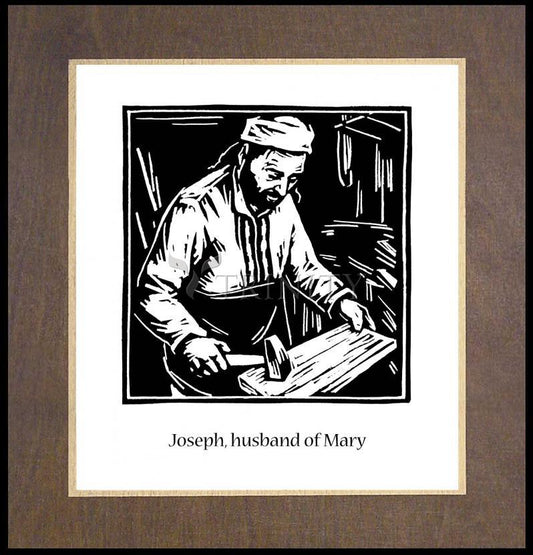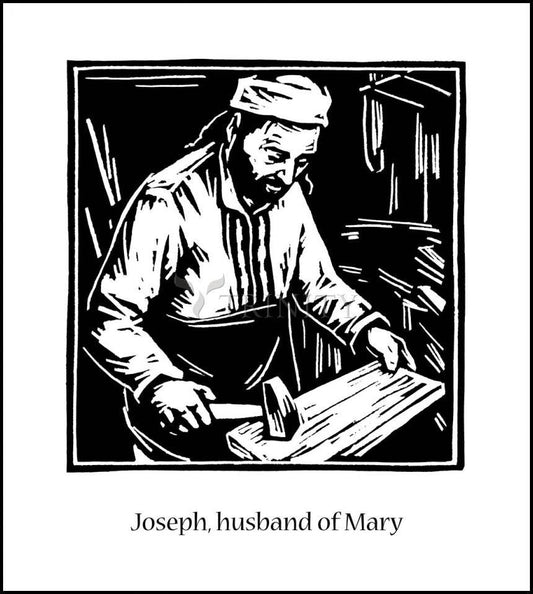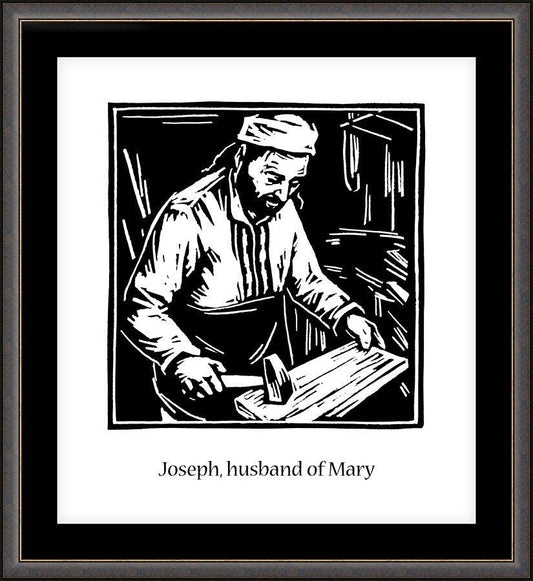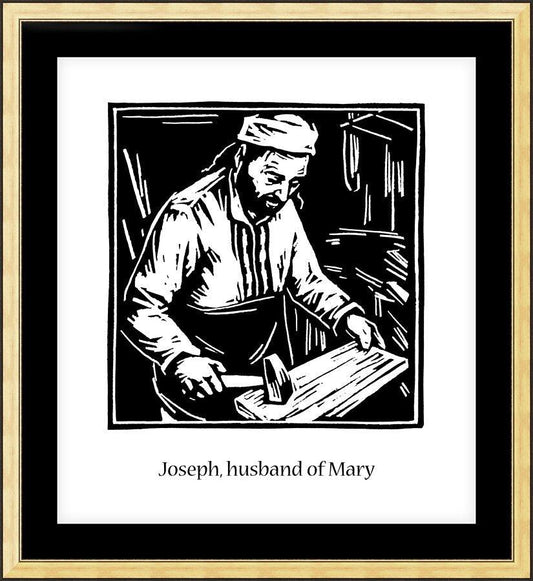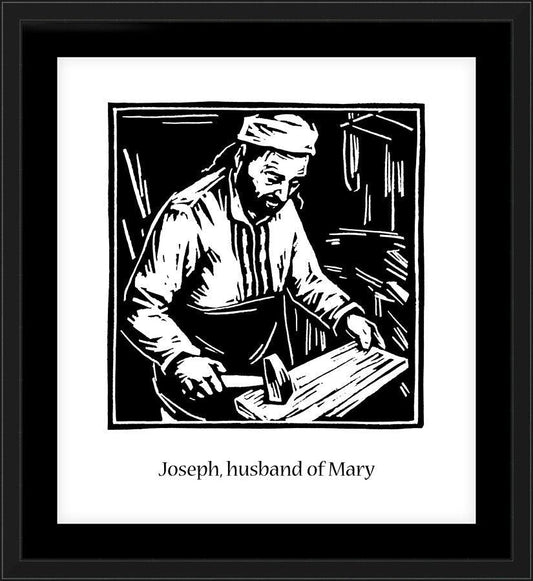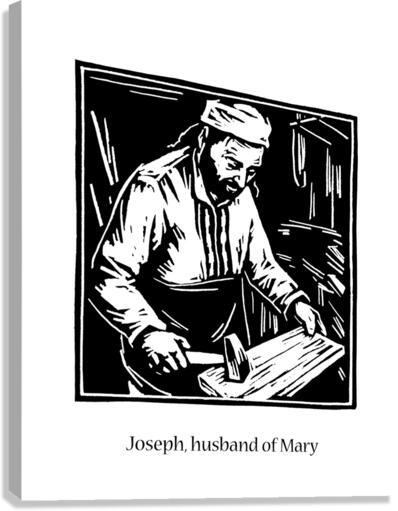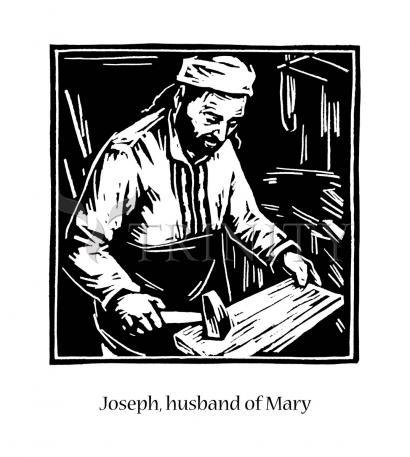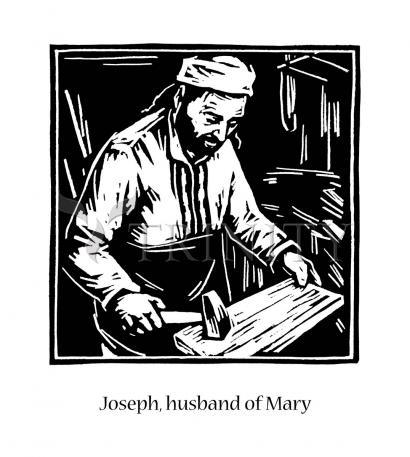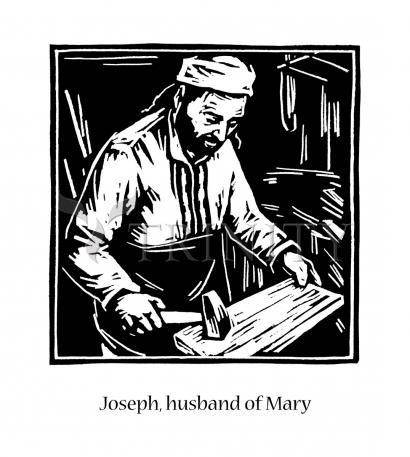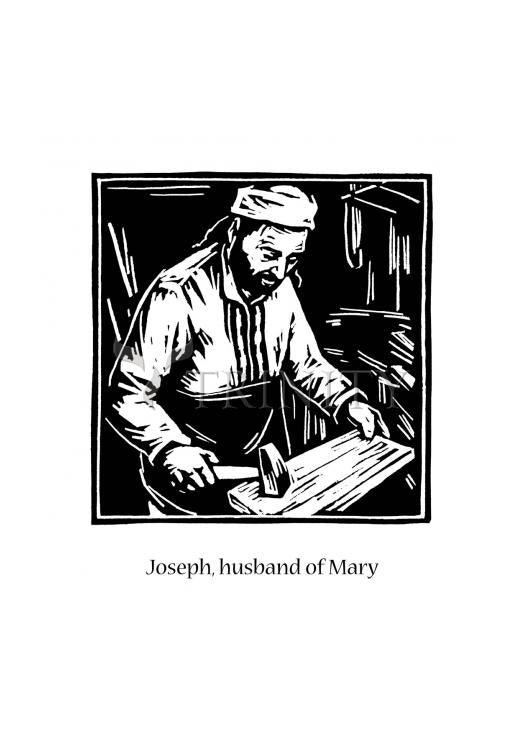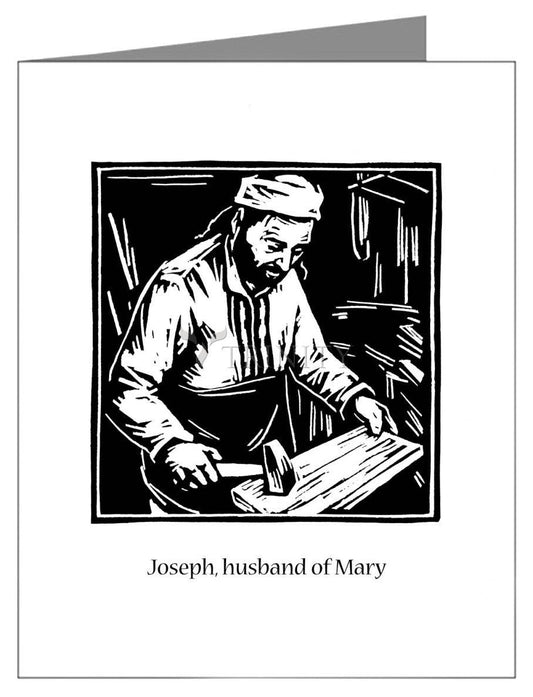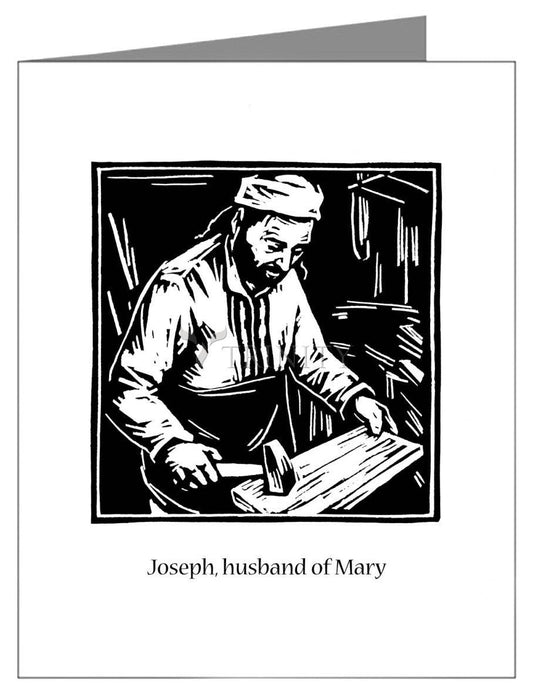Devotion to Saint Joseph
Joseph was "a just man". This praise bestowed by the Holy Ghost, and the privilege of having been chosen by God to be the foster-father of Jesus and the spouse of the Virgin Mother, are the foundations of the honor paid to St. Joseph by the Church. So well-grounded are these foundations that it is not a little surprising that the cult of St. Joseph was so slow in winning recognition. Foremost among the causes of this is the fact that "during the first centuries of the Church's existence, it was only the martyrs who enjoyed veneration" (Kellner). Far from being ignored or passed over in silence during the early Christian ages, St. Joseph's prerogatives were occasionally descanted upon by the Fathers; even such eulogies as cannot be attributed to the writers among whose works they found admittance bear witness that the ideas and devotion therein expressed were familiar, not only to the theologians and preachers, and must have been readily welcomed by the people. The earliest traces of public recognition of the sanctity of St. Joseph are to be found in the East. His feast, if we may trust the assertions of Papebroch, was kept by the Copts as early as the beginning of the fourth century. Nicephorus Callistus tells likewise " on what authority we do not know " that in the great basilica erected at Bethlehem by St. Helena, there was a gorgeous oratory dedicated to the honour of our saint. Certain it is, at all events, that the feast of "Joseph the Carpenter" is entered, on 20 July, in one of the old Coptic Calendars in our possession, as also in a Synazarium of the eighth and nineth century published by Cardinal Mai (Script. Vet. Nova Coll., IV, 15 sqq.). Greek menologies of a later date at least mention St. Joseph on 25 or 26 December, and a twofold commemoration of him along with other saints was made on the two Sundays next before and after Christmas.
In the West the name of the foster-father of Our Lord (Nutritor Domini) appears in local martyrologies of the ninth and tenth centuries, and we find in 1129, for the first time, a church dedicated to his honour at Bologna. The devotion, then merely private, as it seems, gained a great impetus owing to the influence and zeal of such saintly persons as St. Bernard, St. Thomas Aquinas, St. Gertrude (d. 1310), and St. Bridget of Sweden (d. 1373). According to Benedict XIV (De Serv. Dei beatif., I, iv, n. 11; xx, n. 17), "the general opinion of the learned is that the Fathers of Carmel were the first to import from the East into the West the laudable practice of giving the fullest cultus to St. Joseph". His feast, introduced towards the end shortly afterwards, into the Dominican Calendar, gradually gained a foothold in various dioceses of Western Europe. Among the most zealous promoters of the devotion at that epoch, St. Vincent Ferrer (d. 1419), Peter d'Ailly (d. 1420), St. Bernadine of Siena (d. 1444), and Jehan Charlier Gerson (d. 1429) deserve an especial mention. Gerson, who had, in 1400, composed an Office of the Espousals of Joseph particularly at the Council of Constance (1414), in promoting the public recognition of the cult of St. Joseph. Only under the pontificate of Sixtus IV (1471-84), were the efforts of these holy men rewarded by Roman Calendar (19 March). From that time the devotion acquired greater and greater popularity, the dignity of the feast keeping pace with this steady growth. At first only a festum simplex, it was soon elevated to a double rite by Innocent VIII (1484-92), declared by Gregory XV, in 1621, a festival of obligation, at the instance of the Emperors Ferdinand III and Leopold I and of King Charles II of Spain, and raised to the rank of a double of the second class by Clement XI (1700-21). Further, Benedict XIII, in 1726, inserted the name into the Litany of the Saints.
One festival in the year, however, was not deemed enough to satisfy the piety of the people. The feast of the Espousals of the Blessed Virgin and St. Joseph, so strenuously advocated by Gerson, and permitted first by Paul III to the Franciscans, then to other religious orders and individual dioceses, was, in 1725, granted to all countries that solicited it, a proper Office, compiled by the Dominican Pietro Aurato, being assigned, and the day appointed being 23 January. Nor was this all, for the reformed Order of Carmelites, into which St. Teresa had infused her great devotion to the foster-father of Jesus, chose him, in 1621, for their patron, and in 1689, were allowed to celebrate the feast of his Patronage on the third Sunday after Easter. This feast, soon adopted throughout the Spanish Kingdom, was later on extended to all states and dioceses which asked for the privilege. No devotion, perhaps, has grown so universal, none seems to have appealed so forcibly to the heart of the Christian people, and particularly of the laboring classes, during the nineteenth century, as that of St. Joseph.
This wonderful and unprecedented increase of popularity called for a new lustre to be added to the cult of the saint. Accordingly, one of the first acts of the pontificate of Pius IX, himself singularly devoted to St. Joseph, was to extend to the whole Church the feast of the Patronage (1847), and in December, 1870, according to the wishes of the bishops and of all the faithful, he solemnly declared the Holy Patriarch Joseph, patron of the Catholic Church, and enjoined that his feast (19 March) should henceforth be celebrated as a double of the first class (but without octave, on account of Lent). Following the footsteps of their predecessor, Leo XIII and Pius X have shown an equal desire to add their own jewel to the crown of St. Joseph: the former, by permitting on certain days the reading of the votive Office of the saint; and the latter by approving, on 18 March, 1909, a litany in honor of him whose name he had received in baptism.



